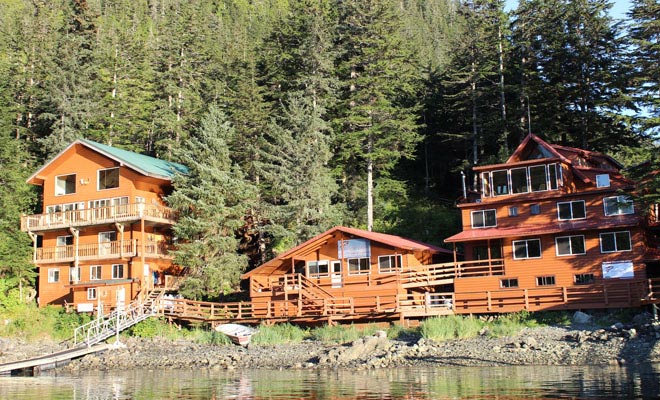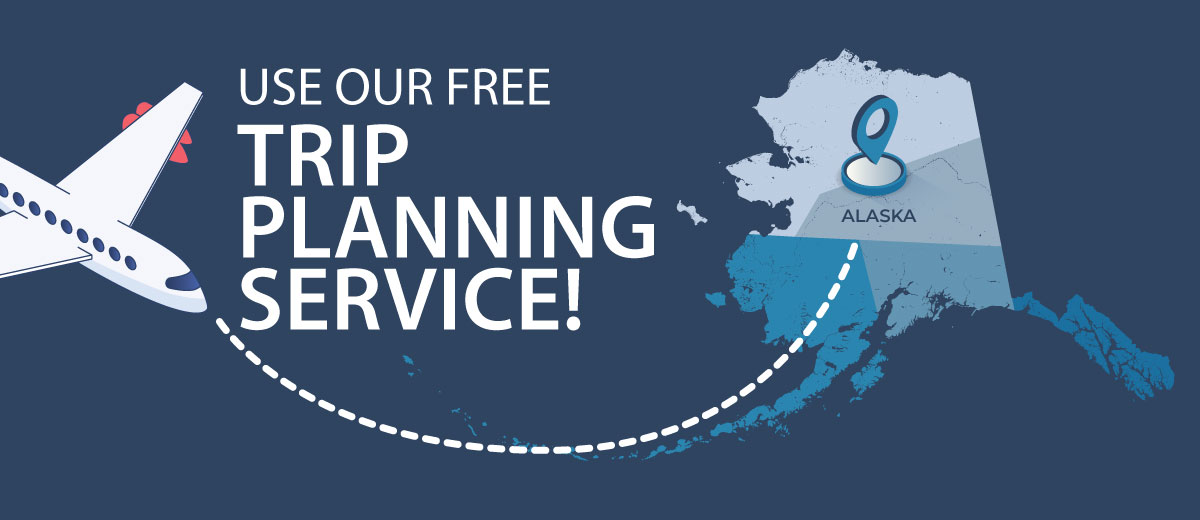Planning an Alaska fishing lodge trip?

You’ve decided that it’s time to take that dream fishing vacation to an Alaska lodge. So how do you figure out when and where to go? Here’s a primer to help get started.
Step 1: Set a budget
Fishing lodges offer a wide range of price-points, depending on the level of service and fishing programs. Bristol Bay lodges, which offer blue-ribbon angling for trout and salmon, have planes at their disposal and use them to fly-out to the best fisheries, and then provide 4- and 5-star dining, may run you upwards of $1,300 per day per person. There are likewise saltwater lodges in southeast Alaska that cater to the high-end traveler and these can exceed $1,000 per day per person, with one super high-end location quoting rates of about $1,900 per person per day.
More commonly, there are full-service operations such as Togiak River Lodge, which offer excellent angling, good food and great service. They fall within the average price range of an Alaska lodge at roughly $850 per day per person. For example, our recent trip to Elfin Cove Lodge covered 6 days, 5 nights and 4 days of fishing and costs $4,495 per person.
So your first step to planning an Alaska fishing lodge trip is to determine a basic budget. If you aren’t a budget-oriented person, or plan on spending whatever it takes to have the chosen experience, then proceed to Step 2.
Step 2: Determine when you can take the trip
Timing in Alaska is critical to angling success, especially for anadromous species. So rather than choosing a destination and then choosing timing, we recommend that you first figure out when you can go and then determine where to go. As an example, if you want to target king salmon, but can only travel in May, we’d recommend locations in Southeast versus Southcentral or Southwest. Using the same logic, an angler who can make the journey to Alaska in early July would be better served targeting the Nushagak or Togiak rivers, among several other Southwest rivers, where runs typically peak in early July.
When planning an Alaska fishing lodge trip, keep in mind that there are also fisheries such as the saltwater around Kodiak Island or the area around Homer where anglers can catch a king salmon every month of the year. For the most part these are “feeder” kings, which by definition are king salmon that have not yet reached sexual maturity and are prowling the saltwater in search of food. In those cases, you might plan your trip to take advantage of other opportunities as well—such as deer, goat or duck hunting provided by Kodiak Combos in Old Harbor, Kodiak.
Step 3: Determine where to go
If you’ve determined a budget and travel dates, this step will be a lot easier. Questions that you will need to answer: salt- or freshwater, target species, fishing techniques, special needs. Some people are more interested in hard-core fishing, while others want some sightseeing and a little bit of R&R mixed in with a bent rod. Some want a guide who can educate about the area, its wildlife and who has an in-depth knowledge of the fisheries, while others want a tight-lipped skipper who speaks few words but puts the anglers on piles of fish.
We recommend that you call and talk with the lodge before booking. Prepare questions in advance and take notes when planning an Alaska fishing lodge trip. Confirm what is included and what an average trip is like. Beware lodges that over-promise, as they typically under-deliver. Ask for references. And finally, submit a form on our Trip Planning Service on this website and we’ll help with recommendations.
Step 4: Packing for the trip
Let’s first talk about clothing. It may be 90 degrees back home, but it won’t be in Alaska. And if you end up spending time in a boat, and especially a saltwater boat, it will feel a lot colder. We recommend that you bring multiple layers, starting with a base layer made of wool or Capilene (or some other modern fiber); next add a long-sleeve shirt and pants (again we recommend wool or a modern fiber, not cotton), and then a jacket that can serve as a top layer in warmer days or mid-layer on colder (we recommend any of the many down jackets available). Finally, high-quality rain gear—jacket, pants and boots—is mandatory to staying warm. Don’t skimp on your rain gear because if you get wet, it is very hard to stay warm. We’d also recommend that you bring a stocking cap and gloves.
Check with the lodge you are visiting to see if they provide rain gear and boots, as many saltwater lodges like Elfin Cove Resort provide that for their guests. Still, we would recommend bringing your own high-quality rain gear so that you know that you will stay dry. We endorse Grundens, StormR, and XtraTuf boots.
Many lodges are remotely located, so a trip to the store to get bug spray or sunscreen is not going to happen. Carefully plan out the items you might need by making a list. Include all necessary medications, sunscreen, bug repellant, toiletries, sunglasses, camera, clothing, waders and wading boots (depending on the freshwater location) and special needs. I also throw in a Spyderco folding knife or Leatherman Multi-Tool as well as a small flashlight or headlamp.
Step 5: Enjoy the trip
It’s taken many years, but I now realize that what I am getting in a lodge experience is a lot more than just fishing. Take in all the sights and sounds. Appreciate the moment and the fact that you are in Alaska. Enjoy the fishing for the sake of fishing and not for the pursuit of filling fish boxes or catching the most or largest fish. Meet some new people and share your experiences. If you do these things we can just about guarantee that the investment in time and money will pay a handsome return in lasting memories when you are planning an Alaska fishing lodge trip.


